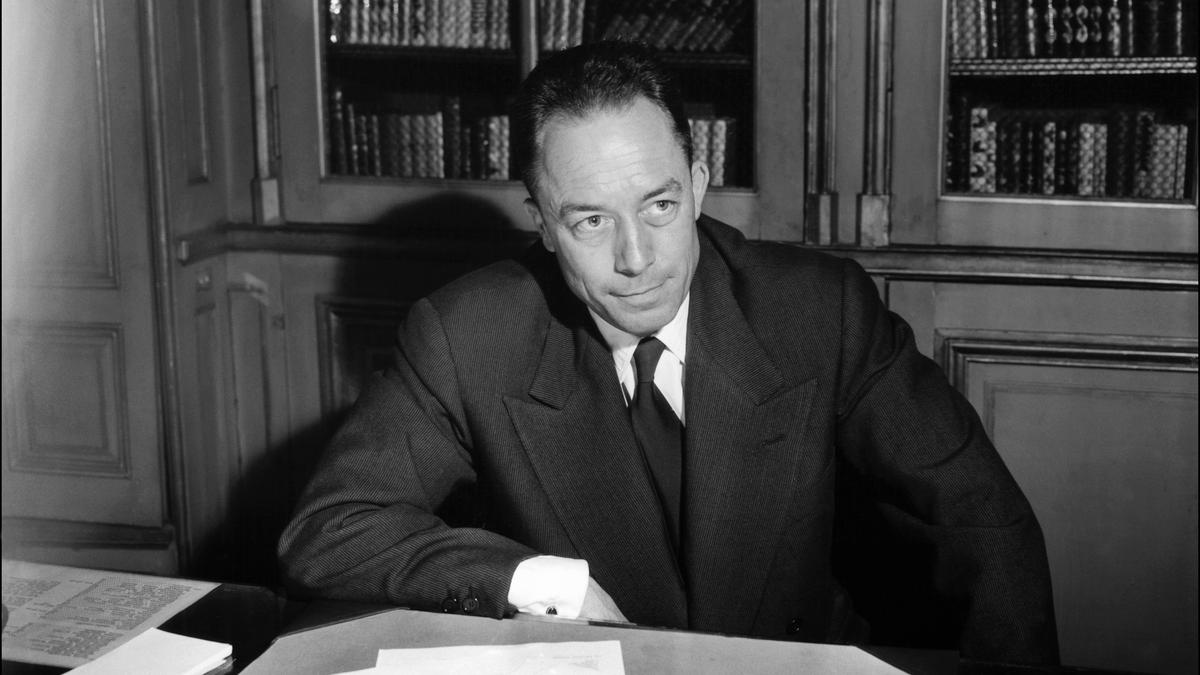
‘The First Man’: Camus, sentimentalism and colonial legacy Premium
The Hindu
The Death of Camus by William Bittner explores the life and legacy of Albert Camus, a complex literary figure.
On the afternoon of January 4, 1960, a Facel Vega hurtled along the Route Nationale Number Five, its speed unchecked, until in a violent instant, it swerved off course and slammed into a tree. The driver, Michel Gallimard, was thrown clear of the wreck but later succumbed to his injuries. By some grace of fate, Gallimard’s wife and daughter, sheltered in the back seat, survived the ordeal. The passenger in the right front seat, Albert Camus — one of the century’s most inspired minds — was killed on impact. William Bittner recounts this vividly in The Death of Camus.
French journalists likened the author’s death to that of his most recognised literary creation, Meursault in The Stranger. Many couldn’t help but remark on the irony and absurdity that surrounded both of their fates. Camus, the prophet of the absurd, had been claimed by it, many observed. The French came together to pay tribute, for Camus, hailed as one of the most distinguished intellects of the twentieth century, was the nation’s pride. The French Camus is one most of us are familiar with. His most celebrated works are, despite his best intentions, French. Moreover, his legacy, often celebrated by the French, tended to overlook his Algerian past.
It is a poignant irony that his untimely passing must preface any discussion of Camus. Yet, in the month of his birth (November 7, 1913) there remains a Camus few speak of — the pied-noir, the irate street urchin racing through the vibrant streets of Algiers, adrift in a world of poverty and uncertainty, far removed from the self-assured and defiant adult he would later become. This Camus is not the author of The Stranger (1942) and The Myth of Sisyphus (1942), nor the voice of resistance in The Plague (1947) and The Rebel (1951).
Born in Mondovi in 1913, Camus lost his father to the Battle of the Marne before his first birthday. Camus grew up in a small apartment in the working-class Belcourt neighbourhood of Algiers with his strict Spanish grandmother, his silent mother who worked as a cleaner, his brother Lucien, and his uncle, a barrel maker. In the cramped quarters of the pieds-noirs, Louis Germain, a grade school teacher, saw something bright in the boy. He guided the young Camus to the lycée, showing him a way out of poverty and into a life his family had never dreamed of. It is a past delicately recreated in The First Man (1994), published three decades after his death. It presents a Camus who identified as Algerian, an aspect of his identity he was hesitant to forsake. So, instead of provoking anticolonial resistance, he called for moderation. Amid the Algerian freedom struggle, Camus chose silence. To the Algerians and the French left intellectuals, his silence was deafening. In times of turmoil, the silence of intellectuals is deemed a betrayal. Camus was not just any intellectual; he was the voice of a generation. He was the emblem of resistance, speaking out against Nazism even when it was perilous to do so. As editor-in-chief and lead writer of Combat, the resistance newspaper, from 1944 to 1947, he gave voice to a generation that witnessed both the rise and the fall of Nazism. However, by 1960, the year of his accident, Camus had lost many admirers.
Yet was Camus silent? Algeria was the chief concern in his Algerian Chronicles (1958). In her preface to the Chronicles, Alice Kaplan acknowledged the special place ‘Nuptials at Tipasa’ retains in the hearts of Algerians. Written much later, The First Man offers a sombre glimpse of the Algeria Camus cherished — a reimagining that served as both a reclamation and a sentimental return. Such reminiscing took the reader to the pieds-noirs of Camus’s past, and in that narrative past, the reader, perhaps, realised Camus’ vision of the future of Algeria and France. They had to learn to coexist. The pieds-noirs were neither French, and they were barely Algerians.
The enduring relevance of Camus’s work testifies to his timeless ideas. Perhaps he saw himself as an exile, speaking up for a community of exiles. But very few accepted Camus’ proposal. In two essays, ‘Representing the Colonized: Anthropology’s Interlocutors’ (1989) and ‘Camus and the French Imperial Experience’ (1994), Palestinian-American scholar Edward Said accused Camus of being a late French imperialist, arguing that in his works, Arabs are reduced to “nameless beings” fading into a background against which “European metaphysics” unfolds. Said’s denouement seems especially harsh when one realises that Said had dedicated his life to addressing the uneasiness and the irreconcilability of identities. The exilic condition is a contentious site where Camus and Said may have converged, yet both passed away before their ideas overlapped. Nevertheless, while Algeria gained independence in 1962, Palestine continues to be colonised.
It is hard to think about an author’s legacy after they are gone. It is even harder with Camus because of the abruptness of his death. Jean Paul Sartre mourned Camus’s early death in his obituary, noting their unfinished argument over Algeria and the many unsaid things that remained. He had hoped Camus would reconsider his stance on the Front de Libération Nationale and Algeria’s struggle for independence. Others had more to say. The Algerian writer and martyr, Mouloud Feraoun, was more forgiving, even generous, when he said, “I would like to tell Camus that he is Algerian as I am and that all Algerians are proud of him.”

The Karnataka government has drafted a comprehensive master plan for the integrated development of Kukke Subrahmanya temple, the State’s highest revenue-generating temple managed by the Hindu Religious Institutions and Charitable Endowments Department. The redevelopment initiative is estimated to cost around ₹254 crore and aims to enhance infrastructure and facilities for devotees.












